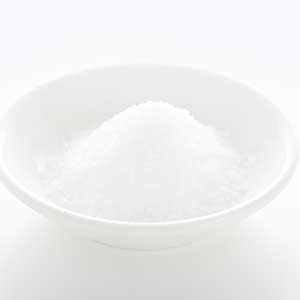
News
Okt . 12, 2024 03:30 Back to list
Exploring Chelating Agents and Their Role in Complex Ion Formation and Stabilization
The Role of Chelating Agents in Complex Ion Formation
Chelating agents are vital compounds that play a crucial role in the formation of complex ions. By definition, a chelating agent is a molecule that can form multiple bonds with a single metal ion, creating a stable complex. This phenomenon is not only fascinating from a chemical perspective but also has significant implications across various fields, including biochemistry, environmental science, and industrial applications.
Understanding Chelation
The term chelation is derived from the Greek word chēle, meaning claw. This metaphor aptly describes how chelating agents seize metal ions, akin to a claw grasping its prey. A chelating agent typically contains two or more donor atoms, which can be oxygen, nitrogen, or sulfur, capable of forming coordinate covalent bonds with a metal ion. The ability to bind to a metal ion using multiple sites allows for the formation of a ring-like structure, or chelate, providing enhanced stability compared to non-chelated complexes.
For instance, ethylenediaminetetraacetic acid (EDTA) is one of the most well-known chelating agents. It features multiple carboxyl and amine groups, enabling it to bind with a variety of metal ions, including calcium, magnesium, and lead. This versatility makes EDTA invaluable in various applications, such as in medicine for treating heavy metal poisoning and in agriculture for improving nutrient availability in soils.
Applications in Medicine
One of the most significant applications of chelating agents is in medicine. Chelation therapy is employed to treat conditions caused by heavy metal toxicity, such as lead or mercury poisoning. For example, the chelating agent dimercaprol (British anti-Lewisite) is used to remove arsenic, mercury, and gold from the body, as it forms stable complexes that are easily excreted by the kidneys.
In addition to detoxification, chelating agents are also used in diagnostic imaging. Gadolinium-based contrast agents, which are used in magnetic resonance imaging (MRI), rely on chelation to enhance the stability and effectiveness of gadolinium ions. This helps improve the quality of imaging, allowing for more accurate diagnosis and treatment planning.
a chelating agent complex ions

Environmental Remediation
Beyond the realm of healthcare, chelating agents play an essential role in environmental chemistry. They are utilized in the remediation of contaminated soils and waters, particularly in the extraction of heavy metals. For instance, the application of chelating agents such as citric acid or EDTA can mobilize heavy metals from solid matrices, facilitating their removal and preventing further environmental damage.
This process is particularly crucial in industrial contexts where metallic contamination can pose significant risks to ecosystems and human health. By using chelation methods, industries can mitigate their environmental impact, thereby promoting sustainability and compliance with regulations.
Industrial Applications
In the industrial sector, chelating agents are prevalent in cleaning products, food preservation, and metal recovery processes. For example, in the textile industry, chelating agents are added during dyeing processes to prevent metal ions from precipitating and interfering with the dyes. Furthermore, in analytical chemistry, chelating agents are vital in titrations and the preparation of complexometric solutions to determine metal concentrations.
Similarly, in food science, chelating agents like citric acid are used to stabilize metal ions, thus prolonging shelf life and preventing spoilage. These applications underscore the importance of chelation in maintaining product quality and safety.
Conclusion
In summary, chelating agents are fundamental compounds that excel in complex ion formation. Their ability to form stable complexes with metal ions has profound implications across diverse sectors, including medicine, environmental science, and industry. As research advances, the development of new and more effective chelating agents continues, promising further innovations and applications. Understanding the intricate dynamics of chelation not only enriches our knowledge of chemical interactions but also pushes the boundaries of technology and sustainability in a rapidly evolving world.
-
OEM Chelating Agent Preservative Supplier & Manufacturer High-Quality Customized Solutions
NewsJul.08,2025
-
OEM Potassium Chelating Agent Manufacturer - Custom Potassium Oxalate & Citrate Solutions
NewsJul.08,2025
-
OEM Pentasodium DTPA Chelating Agent Supplier & Manufacturer High Purity & Cost-Effective Solutions
NewsJul.08,2025
-
High-Efficiency Chelated Trace Elements Fertilizer Bulk Supplier & Manufacturer Quotes
NewsJul.07,2025
-
High Quality K Formation for a Chelating Agent – Reliable Manufacturer & Supplier
NewsJul.07,2025
-
Best Chelated Iron Supplement for Plants Reliable Chelated Iron Fertilizer Supplier & Price
NewsJul.06,2025
